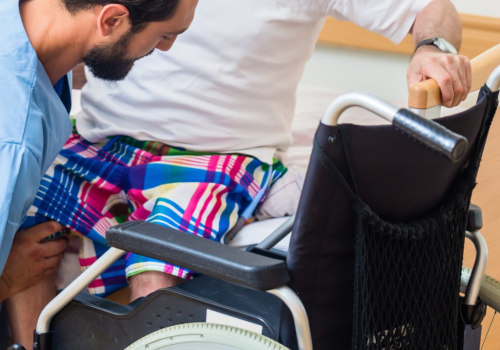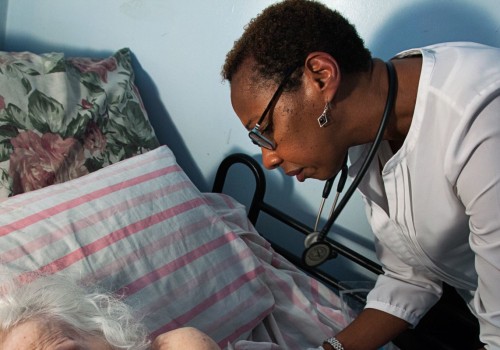Hospice is a focus of care, so it is not tied to a specific location. It can be offered in two types of settings: at home or in a facility, such as a nursing home, a hospital, or even in a separate palliative care facility. Learn more about where end-of-life care can be provided, 3 days ago Hospice offers four levels of care, as defined by Medicare, to meet the diverse needs of patients and their families. The four levels of hospice include routine home care, continuous home care, general hospital care, and temporary care.
For most patients, hospice care is covered through the medical hospice benefit or other insurance plan. Medicare defines four different levels of hospice care. The four levels of hospice defined by Medicare are routine home care, continuous home care, general hospital care, and temporary care. A hospice patient may experience all four or just one, depending on their needs and desires.
Routine home care is a variety of services you get where you live. This care is for times when you are not in a medical crisis. Continuous home care is for times of crisis when a higher level of nursing care is needed. These services can make it easier for you to stay home, even when your symptoms get worse.
Ongoing home care means you need a nurse for at least eight hours in a 24-hour period. You may also get help from other hospice team members at the same time, but at least half of the care must be provided by a nurse. Foster care services are more for the family than for the person in hospice. If someone doesn't qualify for ongoing or inpatient care, but the family is having a hard time, foster care may be an option.
There is a five-day limit for foster care. After that period, the patient returns home. The most common type of hospice service is routine home care. This is delivered to the patient's home, whether they live in their own home, an assisted living facility, or a senior health care facility.
It will include visits from home health assistant nurses, registered nurse case managers, licensed practical nurses, social workers, spiritual care specialists, community educators and volunteers. Continued home care is a more intensive version of routine home care that provides round-the-clock assistance to help patients who experience acute symptoms such as uncontrollable pain or nausea, breathing problems, bleeding, agitation, seizures, or changes in consciousness. It is usually only carried out for a short time to help the patient stay at home in a difficult time. For patients suffering from symptoms that cannot be effectively controlled through home care, general hospital care is recommended.
This is usually short-lived and can be done in the hospice unit of a hospital or long-term care residence. Temporary care is a type of inpatient hospice care that is only done on a short-term basis, usually to give family caregivers a little rest. Caring for a loved one who is terminally ill can be physically and mentally exhausting, allowing caregivers to have time for themselves. Temporary care can also be used when the patient needs a type of care that cannot be easily provided at home only for a short period.
Harbor Light Hospice understands that every person's situation is unique and that each person needs a personalized care plan. Whether your loved one needs only mild help with daily activities or 24-hour care, contact the Harbor Light hospice team to learn how they can make this time easier. Provide palliative care for patients and at home, including respite care, with friendly, experienced support along the way. For patients receiving hospice care at home, hospice nurses make regular visits and are always available by phone 24 hours a day, 7 days a week.
Other hospice team members may also visit, depending on the patient's needs and insurance coverage. For patients receiving hospice care in places other than their home, regular visits or 24-hour care may be options depending on the type of care environment, the patient's needs, and insurance coverage. Hospice care for children is available with significant differences from adult hospice care. For more information, review the “Concurrent Pediatric Palliative Care” section on this page.
To qualify for ongoing care or a higher level of care, a hospice physician must indicate that the new level of care is needed. Routine home care is the most common hospice service and typically includes case managers of registered nurses, LPNs, home nursing aides, social workers, community educators, spiritual care specialists, volunteers, and more. Other care options may or may not be available, depending on insurance coverage and the types of hospice agencies or programs available. Your doctor and other hospice team members work together to decide what level of care you need.
Once the patient has accepted hospice care, they will receive routine care aimed at increasing their comfort and quality of life as much as possible. During respite care, patients spend little time in a Medicare-certified inpatient hospice setting so that their primary caregivers can take a break. For people who are not insured or may not have full coverage for hospice services, some hospice organizations may offer care at no cost or at a reduced rate depending on their ability to pay. There are also different ways that a person can be considered eligible for hospice care, and the costs covered may vary depending on the health plan they have.
Patients who need this type of hospice care usually receive 24-hour care from hospice caregivers. What you may not know is that there are usually four types of palliative care, two of which take place in the home. It is important to know that home hospice may require someone to be home with the patient 24 hours a day, 7 days a week. Not all inpatient hospice services offer respite care, but they can be a relief for patients who sometimes require more intensive care.
. .












